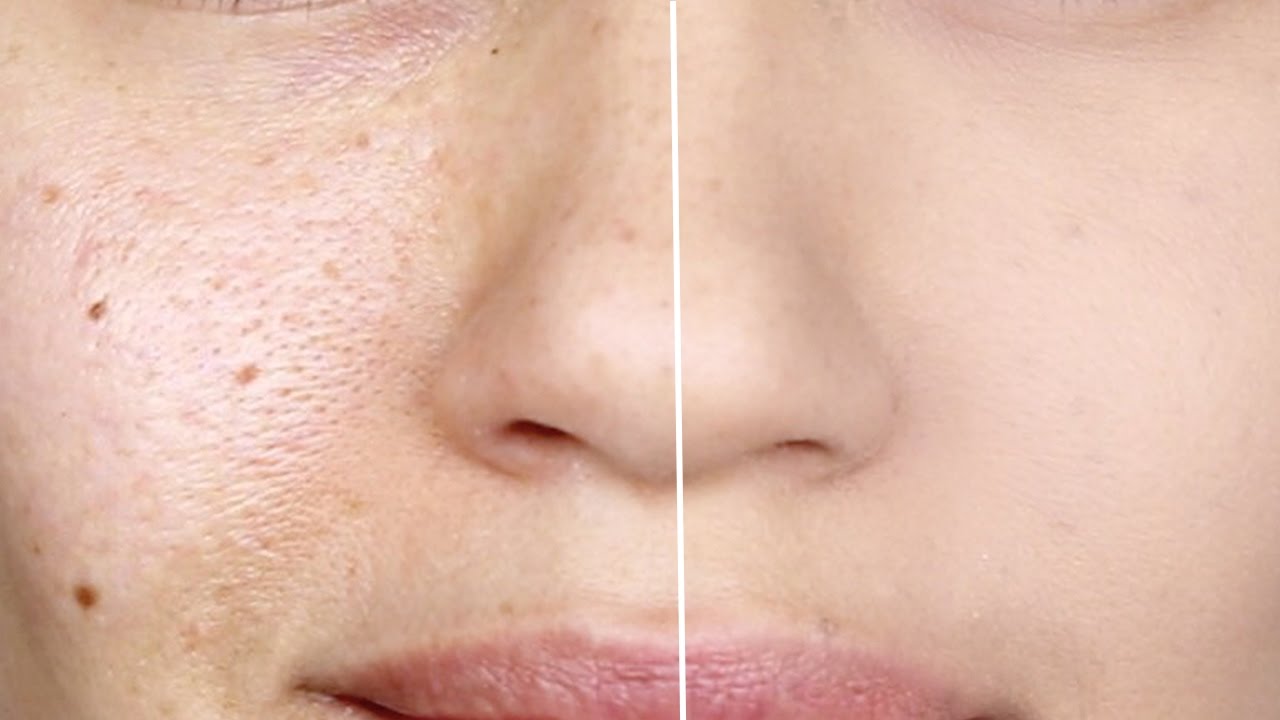Wheatgrass is the first sprouted leaves of the wheat plant. Its scientific name is Triticum aestivium from the family Poaceae (gramineaea). It grows on temperate regions of Europe and the United States. It can live both indoors and outdoors. It is thick, dry and looks like hay or straw.
It is also called Green Blood because it contains a high amount of chlorophyll, the major ingredient in the plant which gives it the green color. It has a surprising structural similarity to hemoglobin which supplies oxygen to the body tissues.
Today we have got you various advantages and benefits of wheatgrass juice, powder and more.
Introduction
Wheatgrass became widely popular in the West during the 1930s because of the efforts of Charles Schnabel for its amazing health benefits and advantages over other health supplements.
Schnabel’s powdered grass was sold in the drug stores of the United States and Canada because it is believed to cleanse the body of its toxins. Wheatgrass is often compared with barley grass.
Nevertheless, both are full of nutrients, strengthens the immune system, are effective in treating constipation, decreases the pain of rheumatism, has magical health benefits and nutritional value.
So for a super duper effect, you can combine the two as well and consume.
How to Use Wheat Grass?**
Wheatgrass extract can be used in a number of forms like food, drink or supplement diet. It comes in the form of
It does not have a flavor of its own. In its raw form it is bitter to taste, therefore, many of the organic powders available in the market are flavored that make it super easy for drinking as a juice or smoothie. It can be served dry or fresh.
**P.C: Before consuming wheatgrass juice/powder or any form, ask your treatment team or doctor if it is safe for you to consume.
Nutritional Values of Wheatgrass
- Protein – It is a good source of growth and building of muscles.
- Potassium – it is a very important component that protects against loss of muscle mass. It preserves bone mineral density and reduces the formation of kidney stones. it also regulates fluid balance and controls the electrical activity of the heart and other muscles.
- Vitamin C – Vitamin C protects against immune system deficiencies, cardiovascular disease, prenatal health problems, eye disease, and skin wrinkling.
- Vitamin B 12 – It keeps the nerves and blood cells healthy. Most importantly it helps make DNA, the genetic material in all cells. It prevents anemia that makes us tired and weak.
- Phosphorus – It helps in building healthy bones and teeth. It maintains the pH balance, growth and provides energy.
- Magnesium – it is important for bone formation and several enzymatic reactions including metabolism synthesis of fatty acids and proteins and transmission of nerve impulses.
- Calcium – Our body needs calcium for strong bones, good heart, and muscles.
- Iron – As an important component of hemoglobin, it helps to transport oxygen throughout the body. It is good for skin, hair, and nails as well.
- Vitamin K – It is a fat-soluble vitamin that makes proteins for healthy bones and normal blood clotting.
- Thiamine – Converts carbohydrates proteins fats to produce energy. It is good for liver skin hair and
- Riboflavin – It helps to break down carbohydrates proteins and fats to produce energy. It also helps in circulation of oxygen.
- Niacin – It lowers cholesterol and triglycerides. It also boosts brain function and is good for the skin.
- Vitamin B 6 – It is needed for proper brain development in kids and brain function in people of all ages. It helps to make serotonin hormone and norepinephrine which helps the body cope with stress.
- Pantothenic acid – also known as vitamin B5, helps convert food into energy.
- Zinc – It is necessary for healthy immune system, growth and fights infection. It is a good cognitive agent as well.
- Copper – Copper helps the body form collagen and absorb iron thereby producing energy. It is important for infant growth and brain strength, cell maturation, cholesterol and glucose metabolism, heart muscle contraction and brain development.
- Manganese – It is a strong antioxidant. It reduces inflammation and improves bone health.
- Selenium — It has high antioxidant properties that protect the cell from damage.
- Beta-Carotene – It is good for a healthy skin, mucous membrane, immune system, and good vision.
Keep reading to discover the possible healing benefits of wheatgrass.
Health Benefits of Wheatgrass
1. Treating Gastrointestinal Distress
It is used since ages to treat stomach pain and manage gastrointestinal problems like diarrhea. It has a good fiber content, it is gluten-free, therefore it has gastrointestinal healing properties.
Some researches have found out that wheatgrass can also be useful in treating ulcerative colitis. People who do not show improvement to traditional medication may find an alternative remedy in wheatgrass.
2. Treatment of Diabetes
Wheatgrass may be beneficial to those suffering from diabetes. It is known to reduce glucose level in blood by raising insulin levels. It fights inflammation by reducing toxins and reduces the side effects of diabetes.
3. Lower Cholesterol Level
A waxy substance found throughout the body is cholesterol. Some cholesterol is required to produce hormones and bile but too much of it can block blood flow and lead to heart diseases.
Wheatgrass has been proved beneficial in treating cholesterol and keeping it in control.
A study was published in the journal “Methods and findings in experimental and clinical pharmacology” in 2010 which stated that wheatgrass helped in the amelioration of hyperlipidemia in an animal model.
This resulted in a rise in the good cholesterol (HDL) and a decline in the total cholesterol levels.
4. Fights Chronic Inflammation
Inflammation is a reaction to show the body has particular health issues such as arthritis skin problems. Wheatgrass has rich antioxidants to fight such health issues.
5. Helps to Come Off Depression
Mental health problems are a gift of this fast-paced life where we have to struggle every day. It takes a toll on our mental well-being.
When we fall short of our achievements and desired results, we feel stressed and depressed. Apart from having a positive outlook, hard work and dedication we can also depend on wheatgrass to take us out from the state of depression again the antioxidant present in wheatgrass help in doing so.
6. Powerful Detoxifier
Because of its powerful detoxifying property, it protects the liver and blood. The enzymes and amino acids found in wheatgrass can protect from carcinogens like no other food or medicine.
It strengthens and detoxifies the liver and bloodstream. It chemically neutralizes environmental pollutants.
7. Improves Eyesight
The beta-carotene present in wheatgrass is a very good combatant for dimming eyesight.
8. Protects from Cell Damage
Cell damage can be caused due to physical, chemical, infectious, nutritional, biological or immunological factors. The good news is that the reversible cell damage can be treated with wheatgrass.
9. Fights Obesity
Obesity is a disease that leads to many serious diseases like diabetes fatty liver heart ailments so on and so forth. It damages the metabolic system. Consuming wheatgrass aids immensely in weight loss.
Wheatgrass, with its number of vitamins and minerals, boosts the overall immune system and keeps us energetic, thereby making us less lethargic and more active. It stimulates the thyroid glands that is a prime reason for obesity.
10. Improve Cognitive Functions
Thylakoids, tiny compartments in plants that contain chlorophyll and absorb sunlight for photosynthesis are believed to improve memory and cognitive functions. Wheatgrass is no exception.
It can relieve anxiety and can even be beneficial in the treatment of the Alzheimer’s disease.
11. Reduces the Side Effects of Chemotherapy
Wheatgrass can be effective in shrinking tumors and increase the lifespan of cancer patients. It reduces some of the harmful effects of chemotherapy without disturbing the effects of the treatment.
12. Prevents Skin Cancer
Another important component of wheatgrass is Selenium which fights against skin damage. It protects and restores by reducing oxidative damage to skin cells and therefore prevents skin cancer.
13. Keeps the Nerves Healthy
Vitamin B12 present in wheatgrass keeps the nerve cells healthy and oxygenated. It also helps in forming and to protect the DNA, the genetic material in all cells.
14. Healthy Bowel Movement
Wheatgrass is rich in dietary fibers. Thus it helps in maintaining a good bowel movement that leads to many health benefits. Dietitians all over the world ask to include a lot of dietary fibers in the diet that helps fight diabetes, heart diseases, weight gain and the dysfunction of the liver.
15. Fights Tumor
It has been found that wheatgrass juice is very powerful in fighting tumors and neutralizing toxins without the usual toxicity of drugs that can also destroy cells. It cleanses the blood and neutralizes and digest toxins in our cells.
16. A Good Multipurpose First Aid
Wheatgrass is soothing and healing for cuts, scrapes, burns rashes, sores, open ulcers, poison ivy, insect bites, boils and so on.
17. Promotes Youthfulness
Weren’t you waiting with bated breath for this particular point? So for all your patience here comes the bonus! It slows down the aging process. It cleanses the blood, rejuvenates aging cells making you feel more alive right away.
It also helps tighten the loose and sagging skin.
After going through all the goodness that wheatgrass possesses, I cannot wait to incorporate it into my daily diet. As said, nature has endowed us with lots and lots of gifts from The Almighty. We just have to recognize those gifts.
Editor’s Recommendation
Are There Any Side Effects of Consuming Wheat Grass?
You should only purchase wheatgrass from a trusted supplier, such as a reputable health store. Talk with an associate to ensure that the plants were grown organically and cleaned properly.
This helps to eliminate the possibility of harmful bacteria and mold.
Possible side effects of Wheatgrass may include:
- A Headache
- Constipation
- Nausea
- Upset Stomach
- Fever
These symptoms may gradually fade within 1-2 weeks, once your body has been used to the wheatgrass.
***P.S: Don’t take wheatgrass if you’re pregnant or breastfeeding. Allergic reactions are possible in some people, especially people who are allergic to wheat or grass. It may also affect you differently if you have a blood disorder, celiac disease, or a gluten intolerance. Consult your doctor/physician before adding it to your diet.
Can Wheatgrass Cure or Reduce Cancer?
It is popularly believed, that Wheatgrass may be a powerful addition to curing cancer patients.
A 2015 review of studies found that wheatgrass has anticancer potential. This could be because wheatgrass kills off certain cells. When used alongside conventional cancer treatment, wheatgrass can boost the immune system and aid the body to detox. However, larger studies are needed to confirm these findings.
A 2011 review also shows that wheatgrass has antioxidant properties that can help to prevent cancer. The high nutritional value of wheatgrass helps to build a strong immune system, which is thought to keep the body healthy and free of disease.
One study in 2007 found that people with breast cancer undergoing chemotherapy reduced their toxicity levels by taking wheatgrass juice. This may be because of its high chlorophyll content.
Wheatgrass may also lower myelotoxicity that is caused by chemotherapy. Myelotoxicity reduces bone marrow function and can increase your risk for infection.
Some Wheatgrass and Cancer testimonials ~ Testimonial 1, Testimonial 2, Testimonial 3
It’s important to find the dosage and time of day that works for you. Trial and error can help you decide if it’s better for you to take on an empty stomach or after food.

I’m Rhea, a fitness enthusiast, and a food lover. I am a housemaker, foodie, writer from NYC. I am a passionate writer and I love exploring places. Since I love cooking and working out, I am sharing my organic food recipes, fitness and beauty tips with the world. Trying to touch lives with some useful information.




